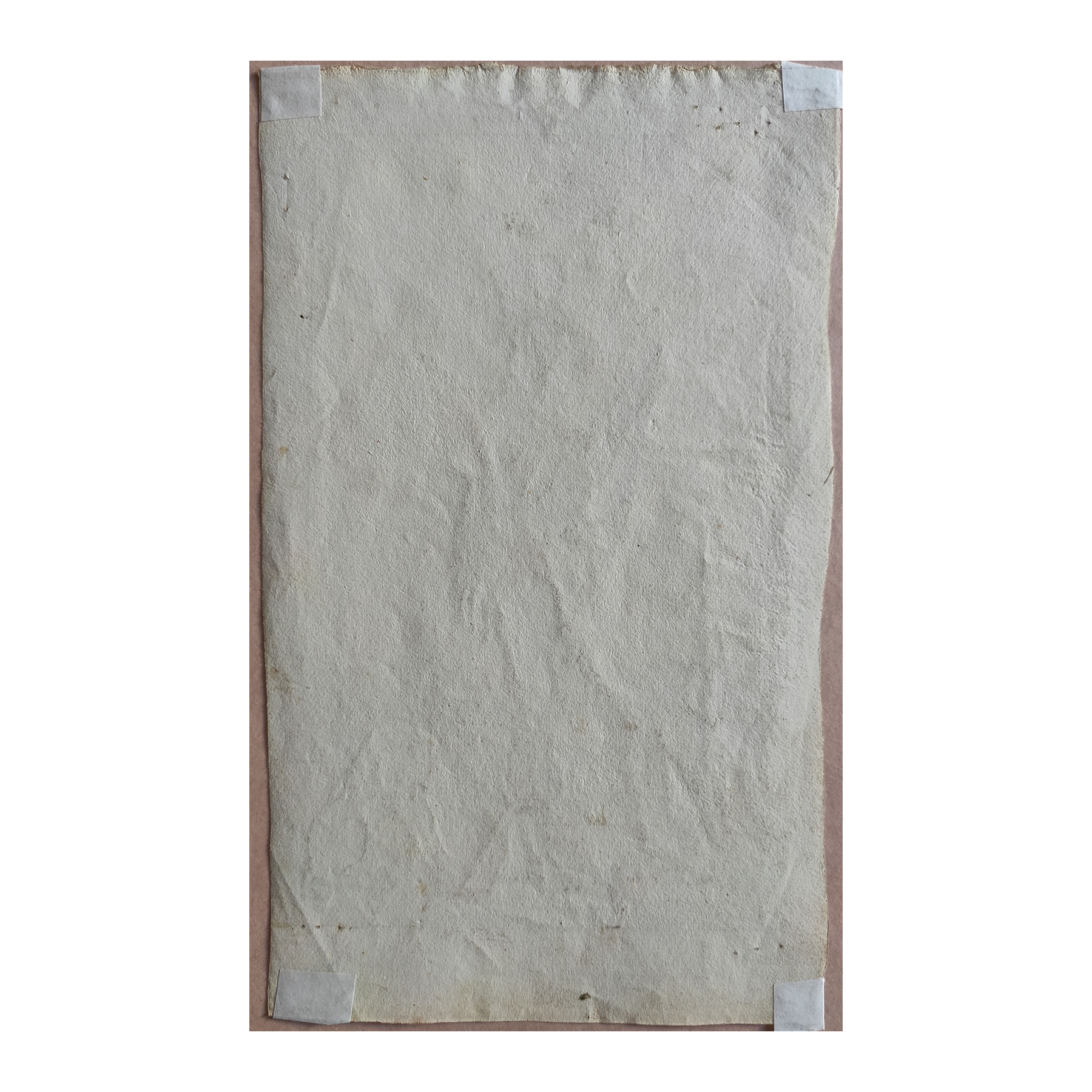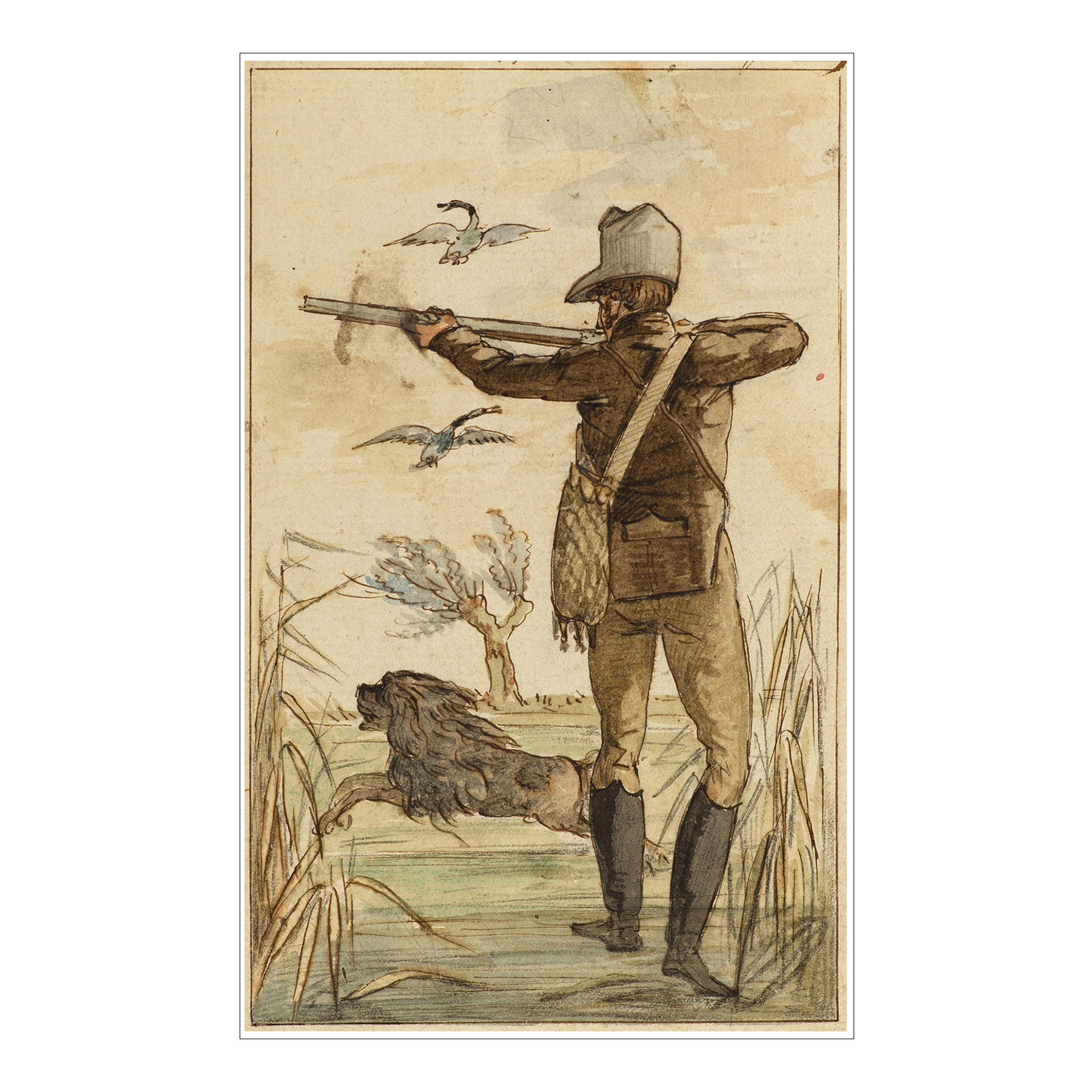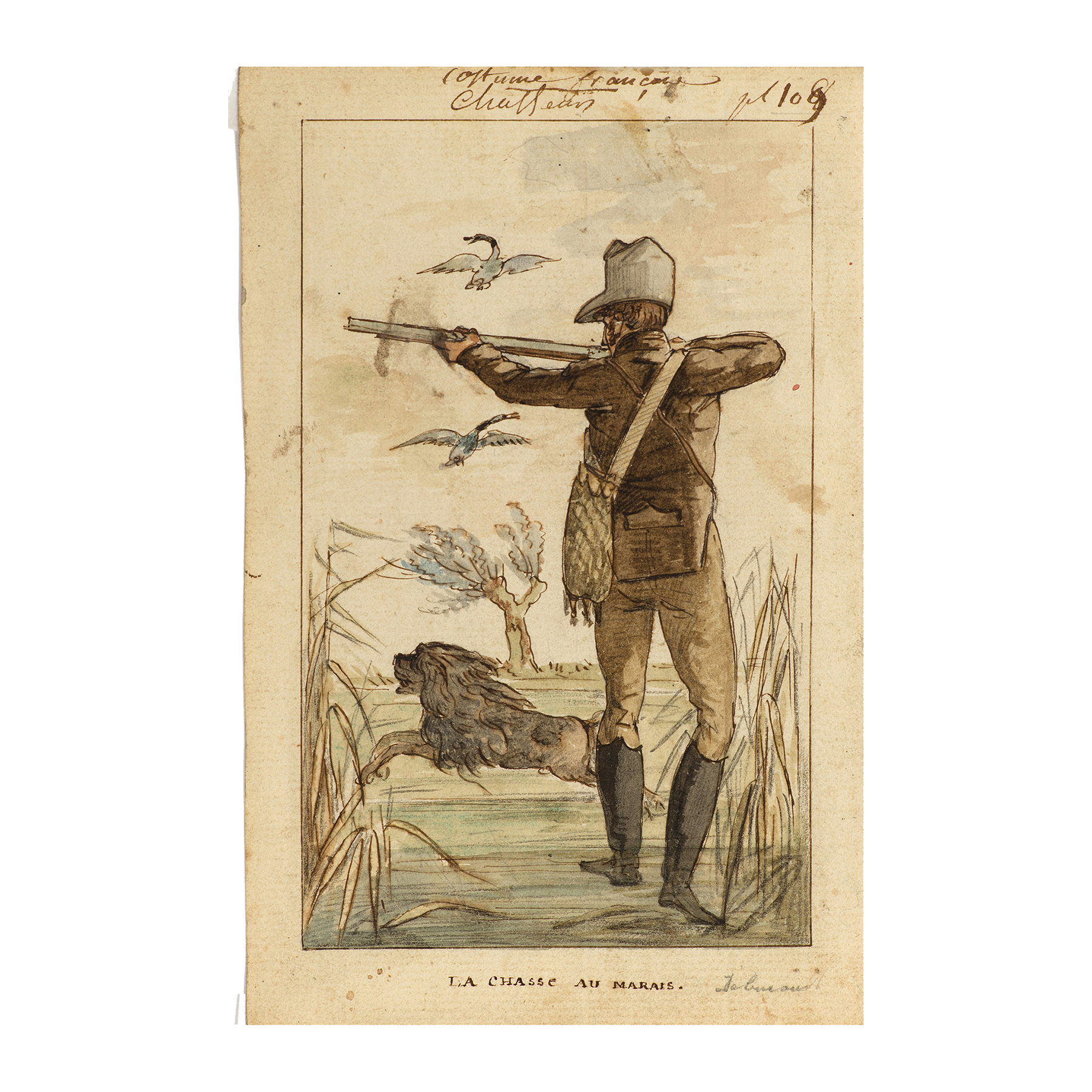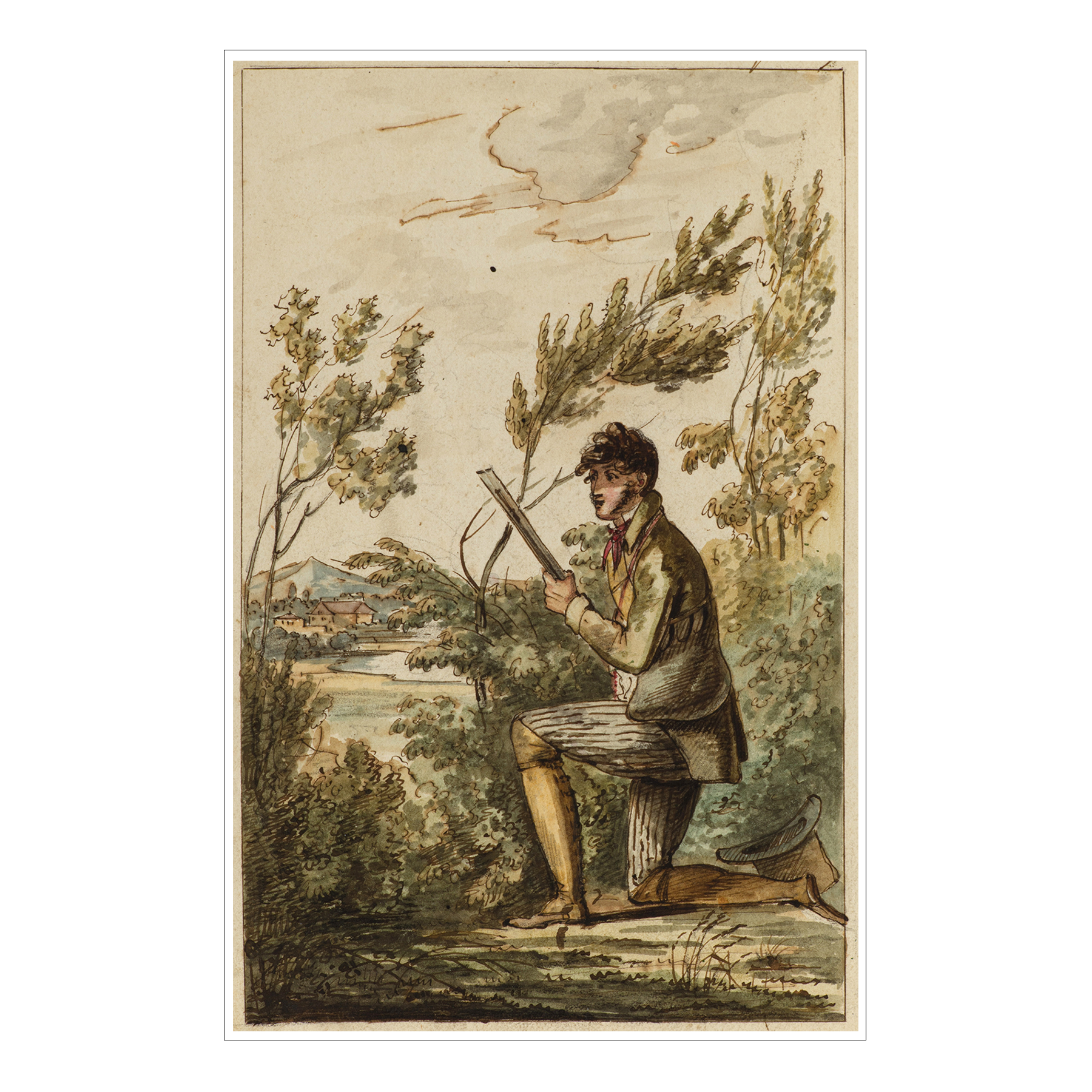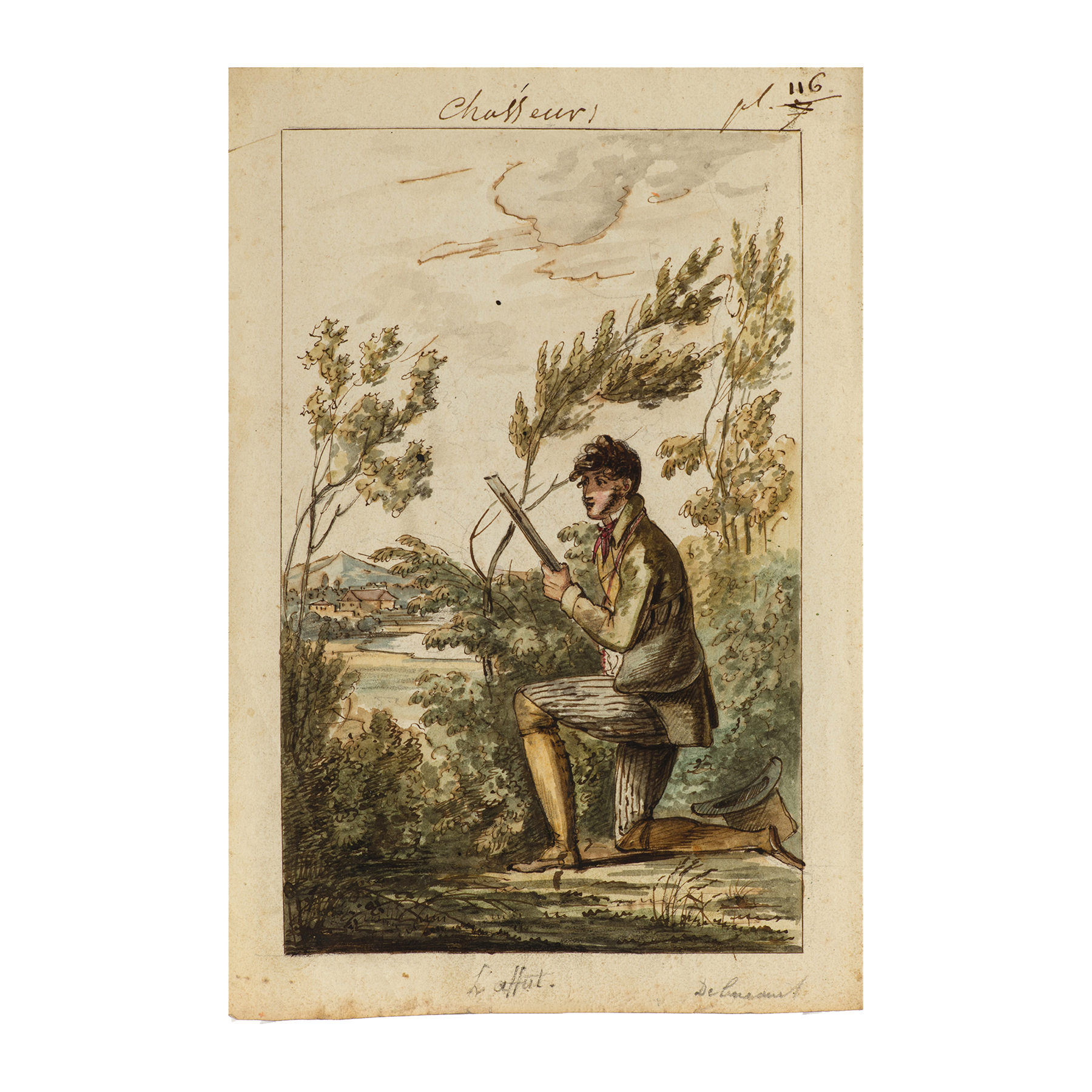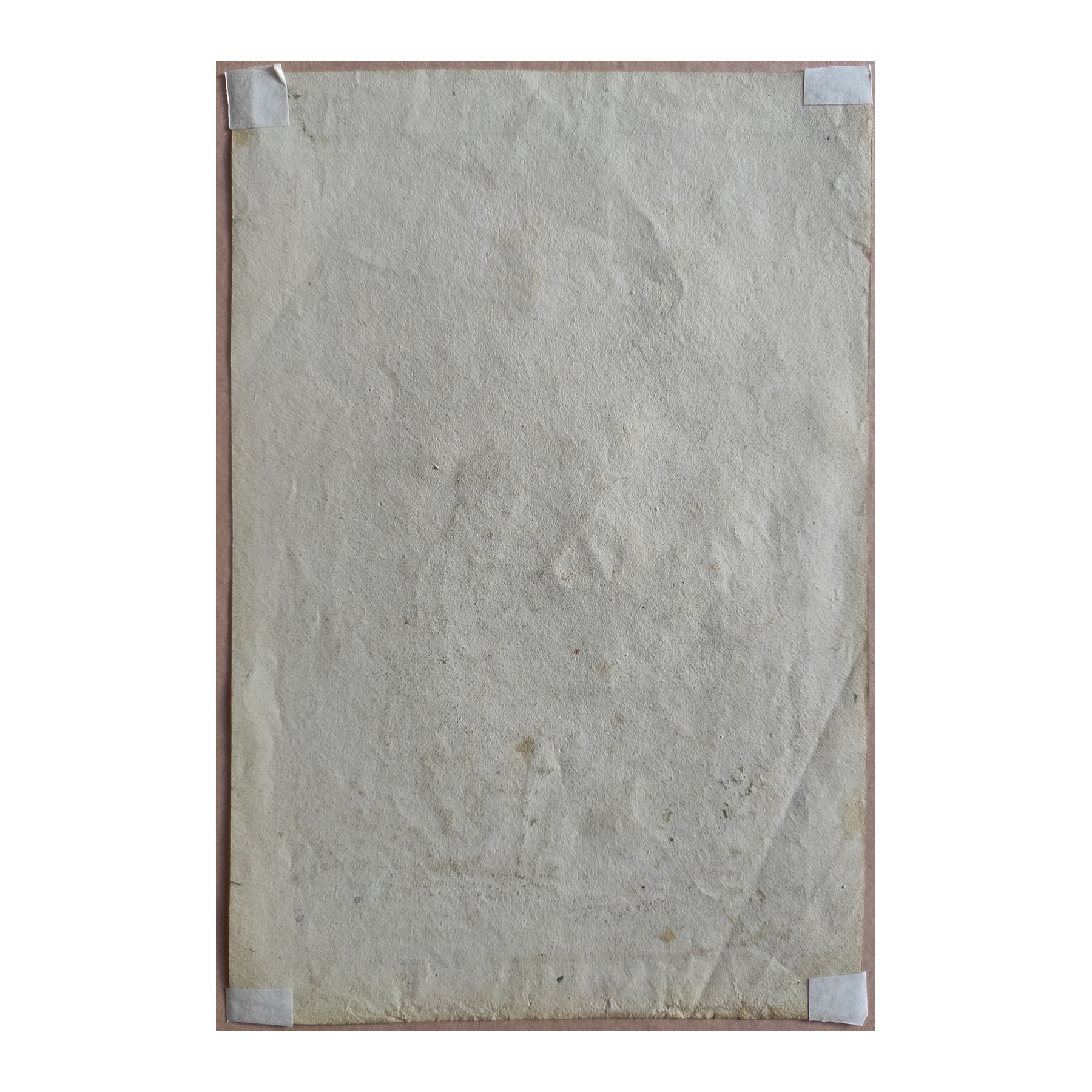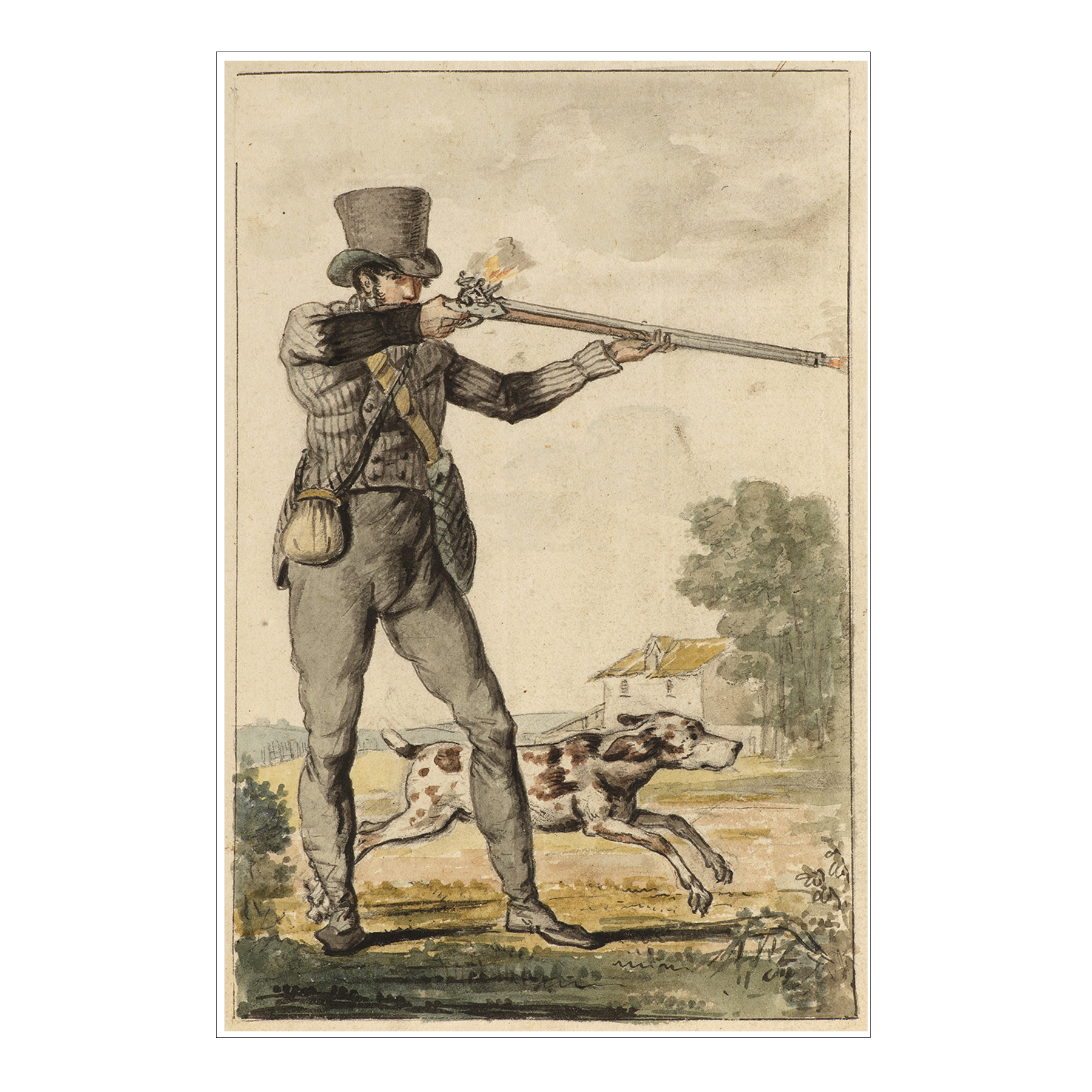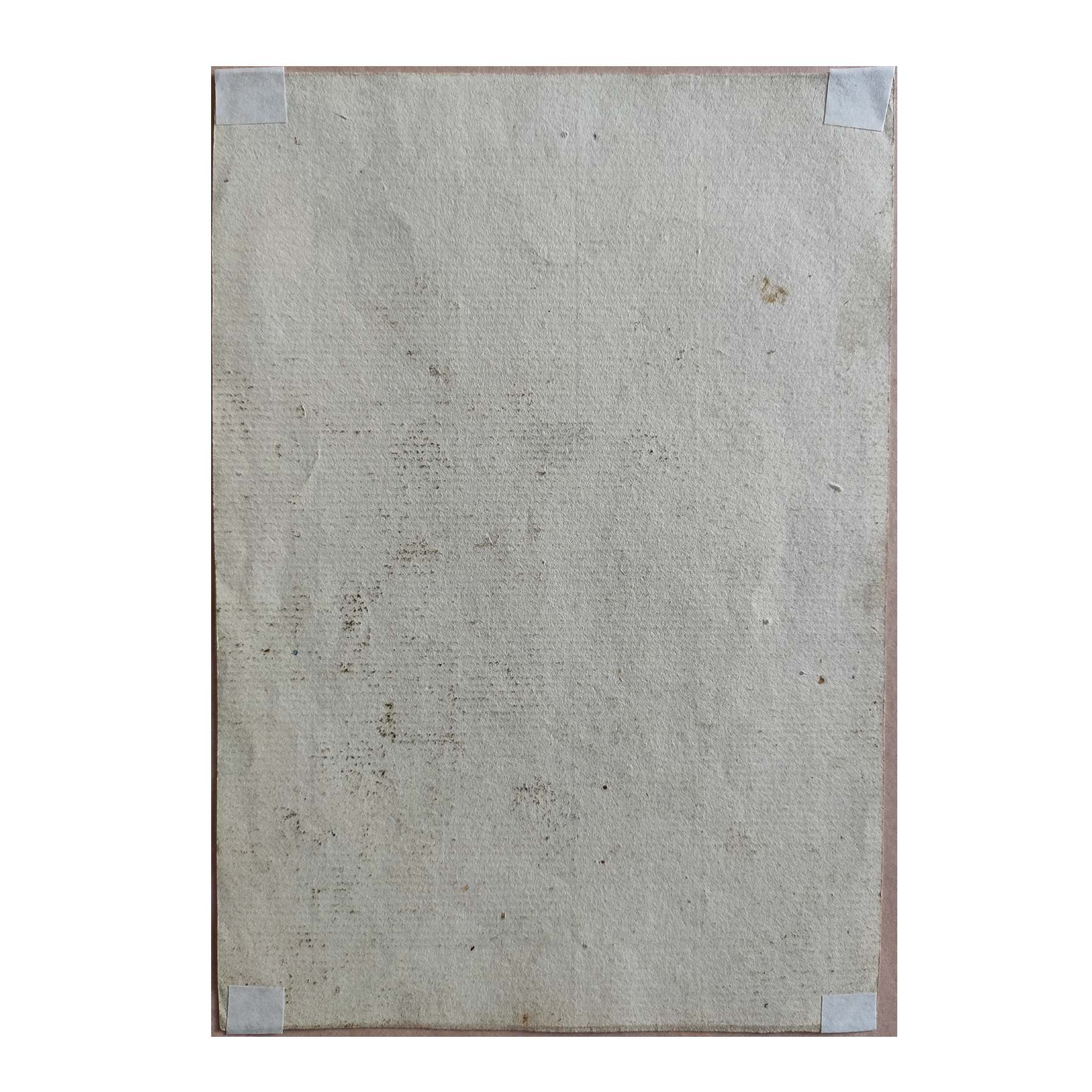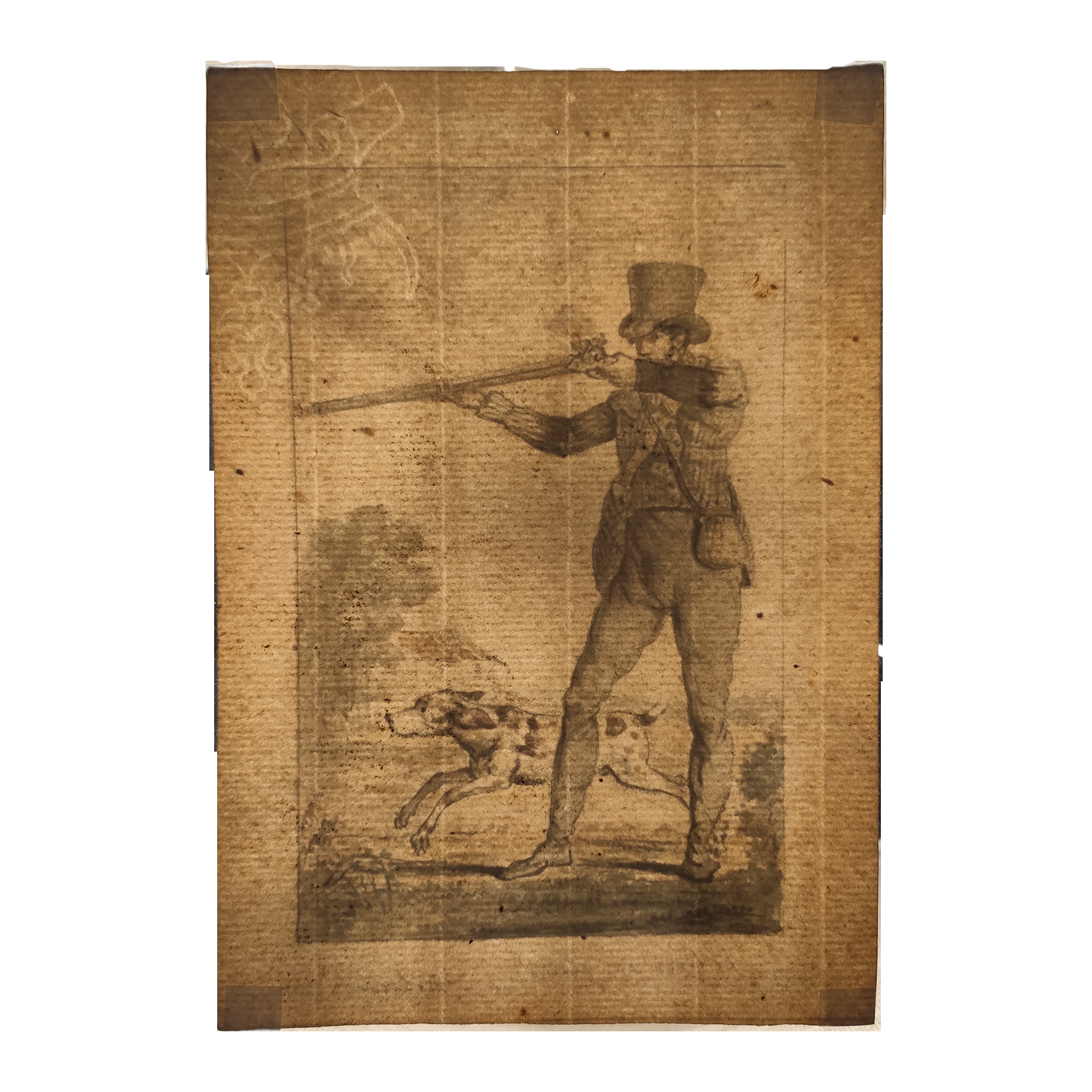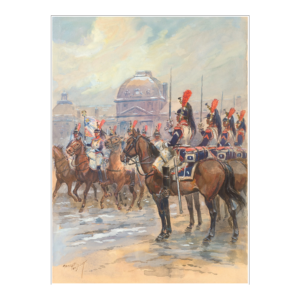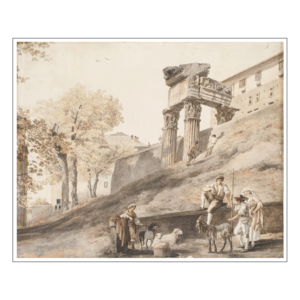Philibert-Louis Debucourt
Paris 1755 – Belleville 1832
The Hunter loading his shotgun
Pen and brown ink, watercolour, traces of pencil.
Framing lines with the pen and brown ink.
Inscribed Chasseur / pl. 6 / Chasseur chargeant son fusil and signed Debucourt.
213 x 131 mm – 8 3/8 x 5 3/16 in.
Hunting in the swamps
Pen and brown ink, watercolour, traces of pencil.
Framing lines with the pen and brown ink.
Inscribed Costume françois / Chasseur / pl. 109 / La chasse au marais and signed Debucourt.
203 x 128 mm – 7 63/64 x 5 1/16 in.
The Hide
Pen and brown ink, watercolour, traces of pencil.
Framing lines with the pen and brown ink. Inscribed Chasseur / pl. 116 / L’affut/ and signed Debucourt.
203 x 123 mm – 7 63/64 x 4 13/16 in.
Shooting in the plains
Pen and brown ink, watercolour, traces of pencil.
Framing lines with the pen and brown ink.
Inscribed pl. 4, Le tirer en plaine and signed Debucourt.
215 x 150 mm – 8 7/16 x 5 7/8 in.
A painter, illustrator and an engraver, Philiber-Louis Debucourt was, like his notorious contemporary Jacques-Louis Davis, a pupil of the painter Joseph Marie Vien. However, he proved to be more interested in studying Flemish painters than the great academical paintings. Agréé by the Académie Royale de Peinture et de Sculpture in 1781, he became a full member of it the following year, reçu (accepted) as genre painter. In 1782, he also married Marie Élisabeth Sophie Mouchy, the daughter and niece of the scuptors Louis Philippe Mouchy and Jean-Baptiste Pigalle, who died only fifteen months later, leaving a son behind. Initially a genre painter – with a predilection for fair, villages or interior scenes – Debucourt soon turned to color engraving, a technique he came to master beautifully, particularly from 1785 to the end of the French Revolution. He used an innovative technique to produce large and luminous compositions, such as The Palais Royal Gallery’s Walk (1787) or The Public Walk to the Palais-Royal (1792), both of which vividly described by Jules and Edmond de Goncourt in L’art du dix-huitième siècle (Paris, 1874). At the turn of the century, Debucourt went through a difficult time, especially in 1801 when his son – and most promising pupil – died. Hardly producing anything else than aquatint or mezzotint, “he then dropped and sank into the fashion and laughter of the times”, as the Goncourts wrote. He was indeed actively collaborating with the Journal des dames et des modes and produced many costumes pieces for the publisher Martinet. Remarried with Suzanne-Françoise Marquant in 1803, he played the part of a master and father to her orphaned nephew, Pierre-Marie Jazet, who was to become in turn a prolific and successful engraver. This drawing as the three others we present, are the lively and elegant studies of hunters represented in different situations and wearing the appropriate attire. They are meant to be engraved and published in the contexte of a suite on hunting clothing, in the same vein as the countless series of military and official uniforms or fashion dress made by the artist. Five engraved pieces representing hunters in their clothing are known; they are very similar to ours but present differents hunting clothes and situations: Horn Player Sounding the Mort, Leaving for the Hunt, The Hunter’s rest, Return from the Hunting trip, Hunting with a Pointing Dog. The catalogue of Debucourt’s printed works, written in 1899 by Maurice Fenaille, mentions that The Hide was engraved. The 9 compositions may have been intended as a suite and there could be others, still unknown. Debucourt worked for various publishers, among whom Aaron Martinet’s (later associated with his son-in-law Herménégilde-Honorat de Hautecoeur) must be mentioned. The publisher of this suite of Hunting attire, his shop seems to have been the huge attraction in the area extending from the Louvre to the Palais royal. On October 6th 1810, one could read in the Mercure de France, regarding the new luxury shops of the area : “But all this luxury of the modern shops hardly attracts the crowd which presses around the simple display of the bookseller in rue du Coq. This shop has its regulars, who never set a foot inside and are content to examine through the windows all the beautiful things offered to their curiosity; to peer new caricatures, theatre costumes, portraits of actors and musiciens, uniforms of the French or foreign troops, the tasteful clothes and furnitures and we could mention many persons of the right sort who, by their own admission, are happier to spend one hour in front of Martinet’s shop than at one of Moliere’s best play.” In Martinet’s shop on 13 and 15 rue du Coq (nowadays rue de Marengo), prints of all sorts of costumes and dresses were published on a day to day basis, meant to be sold and collected, one at a time. Often bearing numerotation, these prints were sometimes gathered in books, such as military or officials dress (Costumes de l’Empereur Napoléon, de l’impératrice et des ministres, 1812) or theatre costumes (Petite galerie dramatique ou recueil de différents costumes d’acteurs des théâtres de la capitale, Paris, Martinet, 1796-1843) which does not seem the case with these Hunting scenes. “Suites de chasseurs” is inscribed on some prints, “Costumes français” on others (it is also inscribed on our drawing representing Hunting in the Swamps), which could indicate that these studies of hunters were meant to be gathered as a suite and inserted in a wider publishing project on French fashion. Debucourt made several forays into the equestrian and hunting worlds and executed printed reproductions of Carle Vernet’s famous painted or drawn compositions for the publisher Rolland. It is maybe through this work that he was inspired these studies of hunters. The letters exchanged between both artists bears testimony of their lifelong friendship; “without you, my modest craft would have remained in a narrow circle, a circle of which you multiplied the circumference by one hundred” wrote Carle Vernet in a modest and friendly way in a letter preserved in the Carnavalet museum in Paris, a moving tribute to the work of his admired engraver and respected friend.



